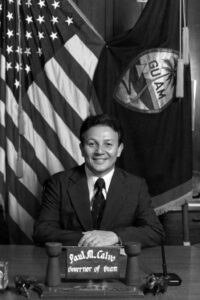First Commission on Self-Determination

In May 1980, Governor Paul M. Calvo created the first Commission on Self-Determination. Similar to the Political Status Commissions of the 1970s, it was tasked with gauging the desire of the people of Guåhan as to their future relationship with the United States. The Commission then organized a task force for each political status option and conducted a public education campaign on the advantages and disadvantages of each status.
After the campaign was completed, the commission conducted a plebiscite to establish the people’s choice on 30 January 1982. There were seven available options for consideration, including: Statehood; Independence; Free Association; Territorial Status with the United States; Commonwealth Status with the United States; Status Quo; and Other.
With the formation of the Commission, significant questions of debate arose: Who is CHamoru and how are they identified? Who is the “self” in “self-determination?” Does the right to self-determination only apply to the CHamoru people? Should non-CHamoru residents be considered in this process?
The debate became heated. Some advocated that CHamorus should be the primary participants in any effort at self-determination. Other vocal non-CHamoru US citizens opposed this and felt the vote should include everyone. After much discussion the Commission agreed to define a CHamoru as “all those born on Guam before 1 August 1950 [the date of the Organic Act’s passage] and their descendants.”